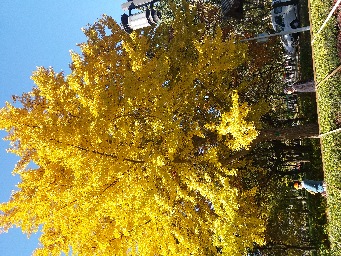
英文原版 Bugis Houses Celebes,西里伯斯的布吉斯房屋 Ursula Schulz-Dornburg 艺术摄影作品集
¥ 310 九五品
仅1件
北京通州
认证卖家担保交易快速发货售后保障
作者Ursula Schulz-Dornburg
出版社MACK
ISBN9781913620332
出版时间2021-07
印刷时间2021-07
装帧精装
页数64页
上书时间2022-05-28
- 最新上架
商品详情
- 品相描述:九五品
- 商品描述
-
乌苏拉-舒尔茨-多恩伯格......关注景观和建筑的解体,以及随之而来的社会和文化经验的丧失。她对苏拉威西岛的布吉斯人房屋的印象见证了过去的时代和生活方式。- Deutsche Welle
Schulz-Dornburg的作品不仅记录了房屋的物理形态......而且反映了传统在当今社会的不稳定地位,特别是通过乡土建筑表现出来的。- 圣像杂志
像所有严肃的艺术家一样,[舒尔茨-多恩伯格]的作品[是]比它可以被描述的更多:敏锐的政治智慧与诗人对光、石头、形式和闪亮的视野的感觉相结合。- 纽约时报
1983年,Ursula Schulz-Dornburg陪同两位民族学家和一位建筑师到印度尼西亚苏拉威西岛中部的Tana Toraja进行研究旅行。这次旅行是由阿姆斯特丹皇家热带研究所发起的,目的是 "探索萨丹-托拉贾人的建筑和象征主义的变化模式"。在从兰特帕奥返回乌戎班当机场的路上,舒尔茨-多恩伯格经过了布吉人或托-乌吉克人的独特房屋,它们栖息在黄色的稻田里。她被他们复杂而富有表现力的建筑所吸引,开始在离开前的短暂时间内拍摄这些房屋,并意识到这些建筑很可能不会再以其传统形式存在。其结果是一组作品,不仅调查了这些房屋的物理形式,还考虑了关于物理和情感的家庭建设的广泛想法,以及传统在当今的不稳定地位。
布吉斯人的房子位于天地之间,当稻田被淹没时,它们站在水面上,反映了他们民族的创世神话,在这个神话中,上层世界和下层世界的神灵共同创造了人类,让他们居住在无人居住的中层世界。舒尔茨-多恩伯格所描绘的农民也同样悬浮在历史传统和当代世界即将到来的压力之间。当他们去工作或迎接她的相机时,他们和他们的家园在过去和未来、神话和日常现实之间得到了平衡。
舒尔茨-多恩伯格用这些精明而敏感的图像,捕捉到了在特定文化和景观中建立和生活的生活,对我们称之为家的地方进行了探索性的思考。
附有Sirtjo Koolhof的文字。
‘Ursula Schulz-Dornburg ... focuses on the disintegration of landscapes and architecture, and the subsequent loss of social and cultural experiences ... Her impressions of the Bugis houses in Sulawesi bear witness to bygone eras and ways of life.‘ – Deutsche Welle
‘Schulz-Dornburg’s body of work not only documents the houses’ physical forms ... but reflects on the precarious place of tradition in the present day, particularly as expressed through vernacular architecture.‘ – Icon
‘Like that of all serious artists, [Schulz-Dornburg's] work [is] more than how it can be described: a keen political intelligence combined with a poet’s feeling for light, stone, form and shimmering horizons.’ – The New York Times
In 1983, Ursula Schulz-Dornburg accompanied two ethnologists and an architect on a research trip to Tana Toraja on the central Indonesian island of Sulawesi. Initiated by the Royal Tropical Institute of Amsterdam, the trip was intended to “explore the changing patterns in architecture and symbolism among the Sa‘dan Toraja”. On the way back from Rantepao to Ujung Pandang airport, Schulz-Dornburg passed the distinctive houses of the Bugis or To-Ugiq people, perched on the yellow paddy fields. Fascinated by their complex, expressive architectures, she began to photograph the houses in the short time she had before leaving, realising that the structures would likely not exist in their traditional form for much longer. The result is a body of work that not only surveys the houses’ physical forms but also considers wide-ranging ideas of physical and emotional homebuilding and the precarious place of tradition in the present day.
Poised between heaven and earth and standing above the water when the rice fields are flooded, the Bugis houses reflect the creation myth of their people, in which the gods of the upper and lower worlds came together to create man to populate the uninhabited middle world. The farmers depicted by Schulz-Dornburg are likewise suspended between historic tradition and the impending pressures of the contemporary world. As they go about their work or greet her camera, they and their homes are held in the balance between past and future, mythology and everyday reality.
With these shrewd and sensitive images, Schulz-Dornburg captures life as it is built and lived within a particular culture and landscape, offering a searching reflection on the places we call home.
With a text by Sirtjo Koolhof.
Printed linen hardback
16 x 21.5cm, 64 pages
ISBN 978-1-913620-33-2
July 2021
— 没有更多了 —





















以下为对购买帮助不大的评价